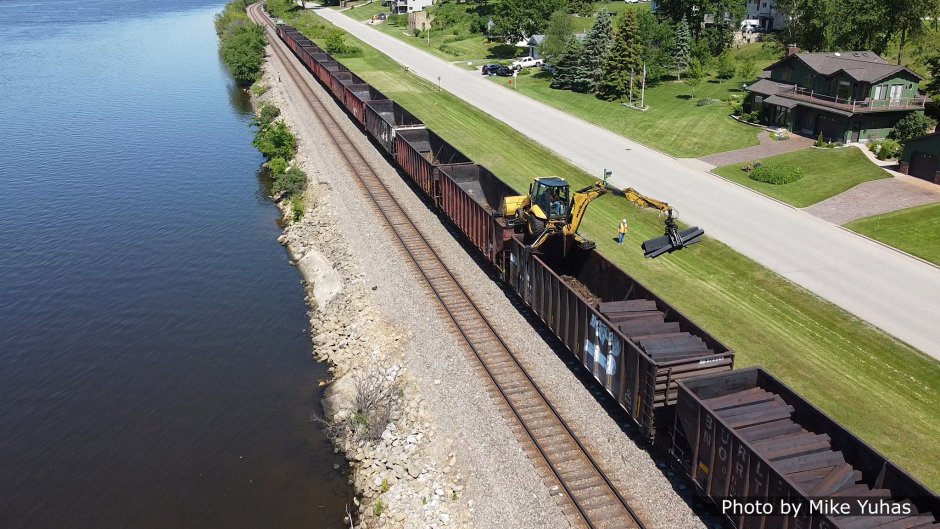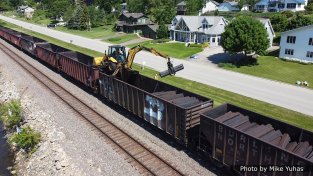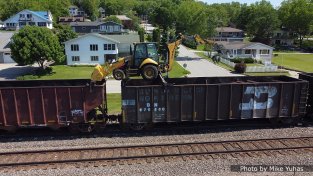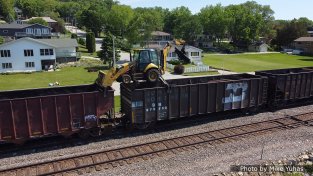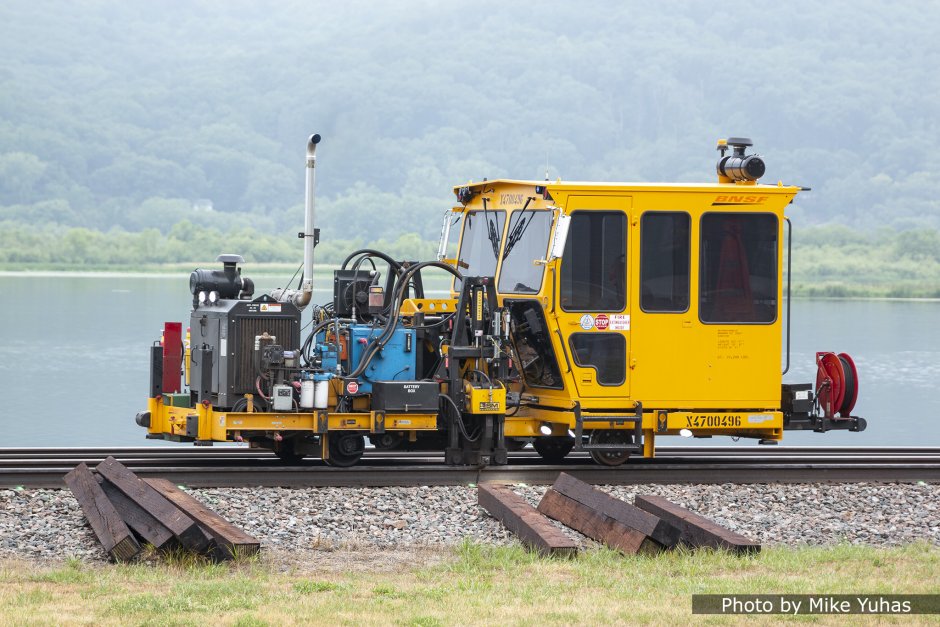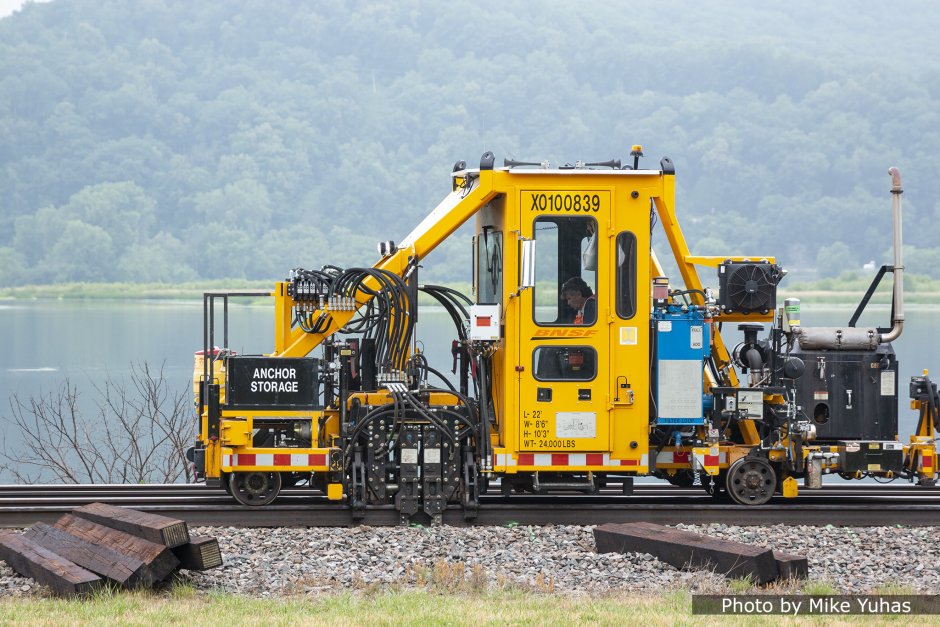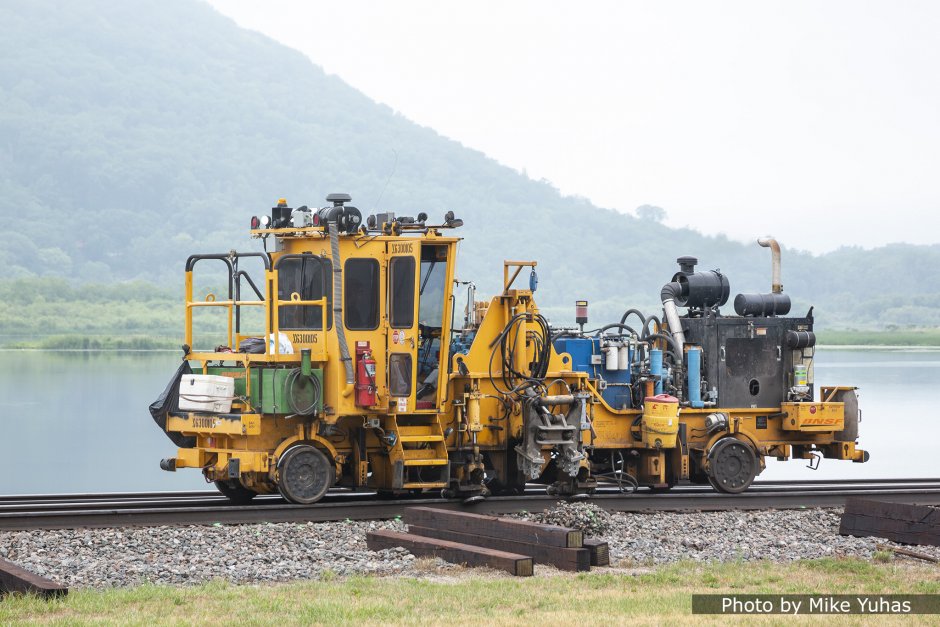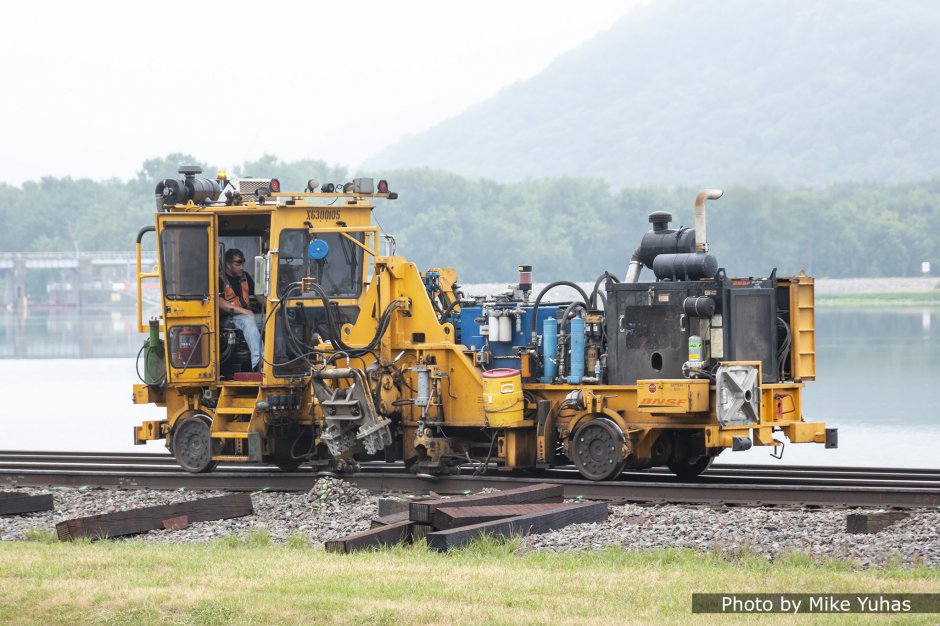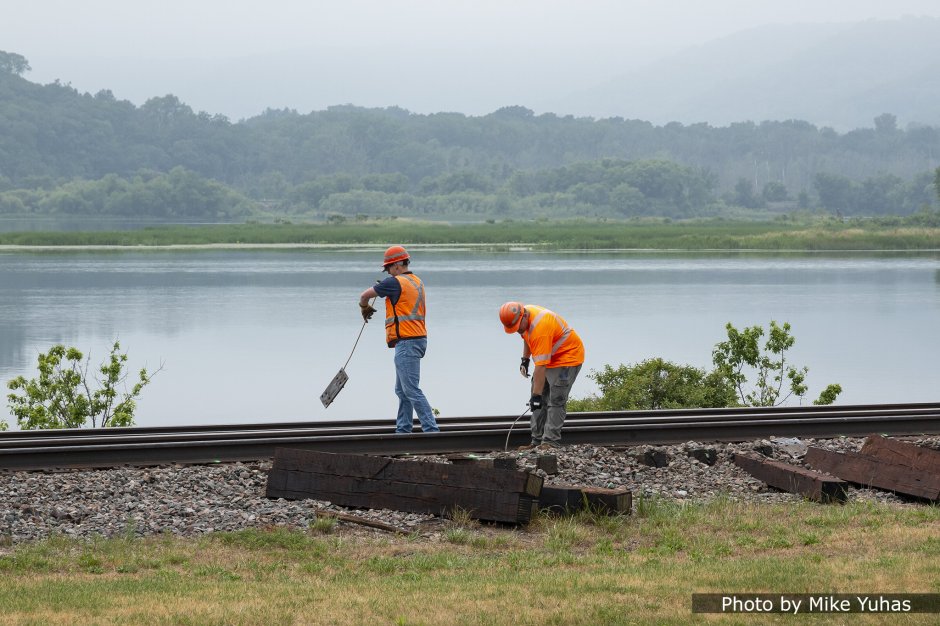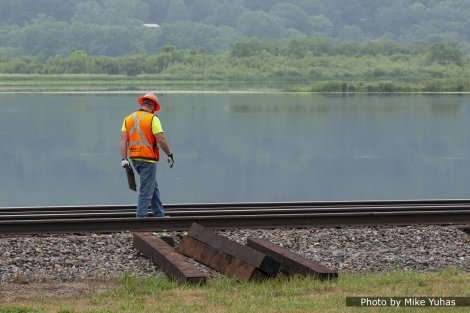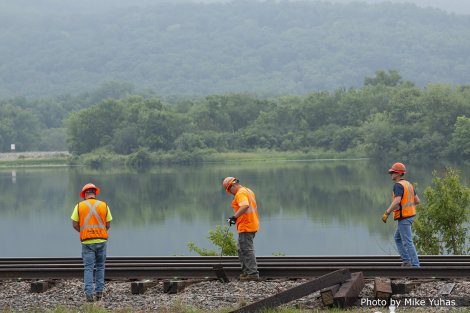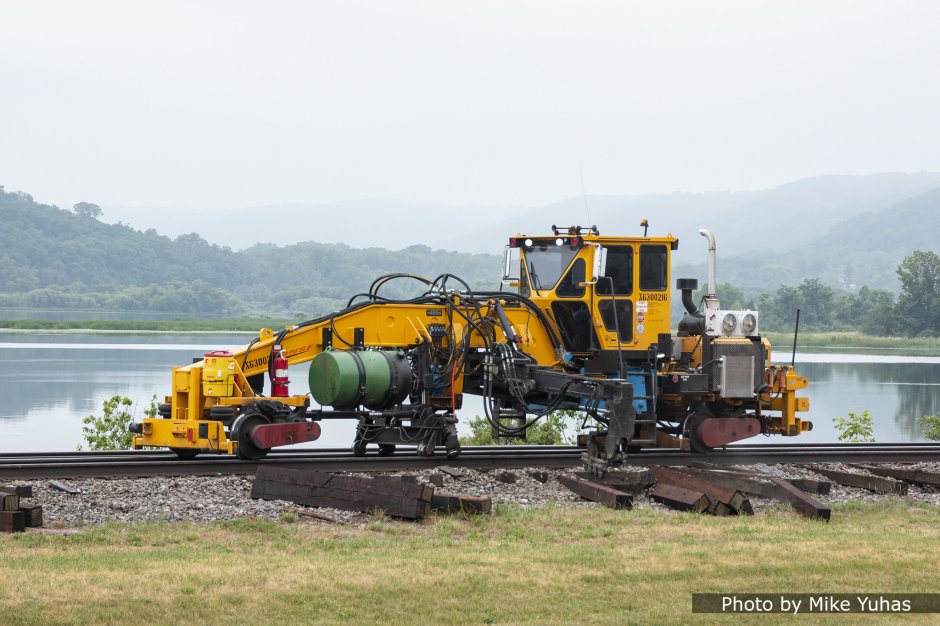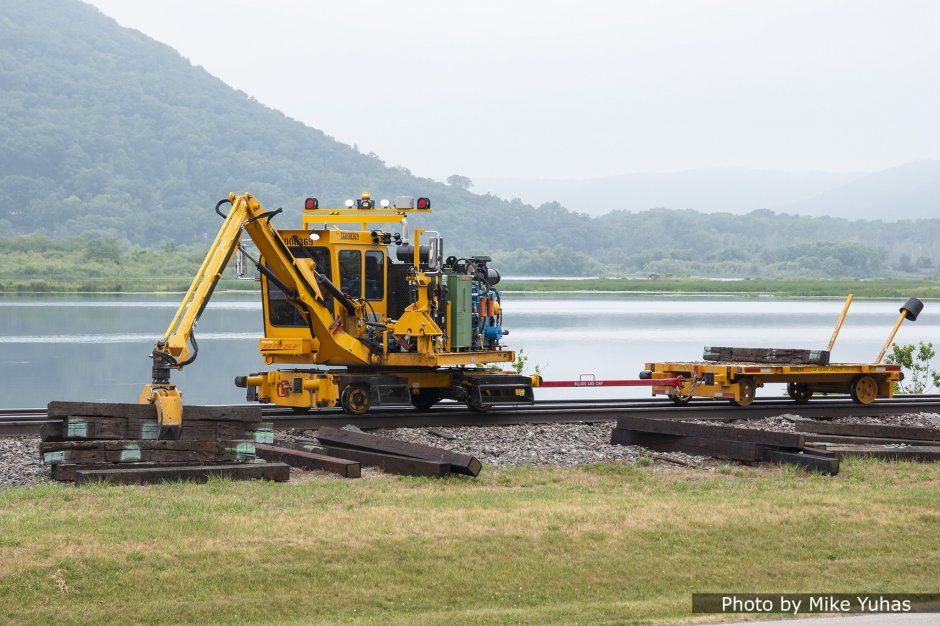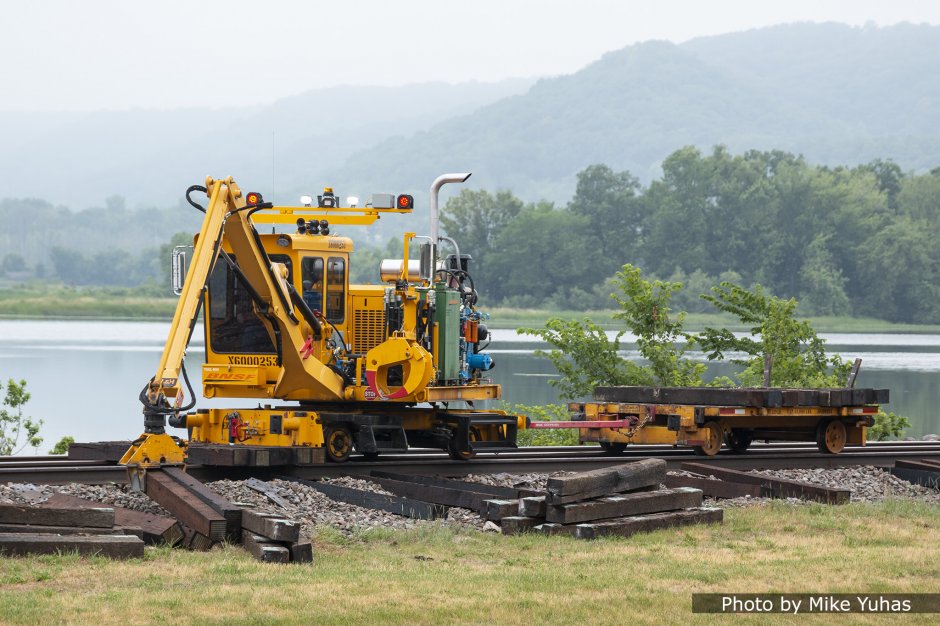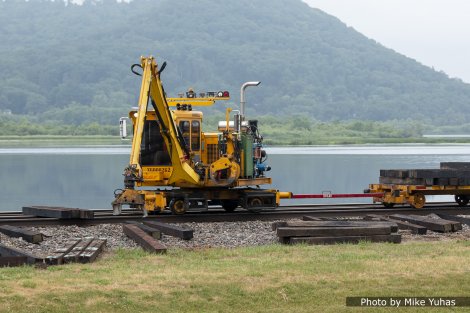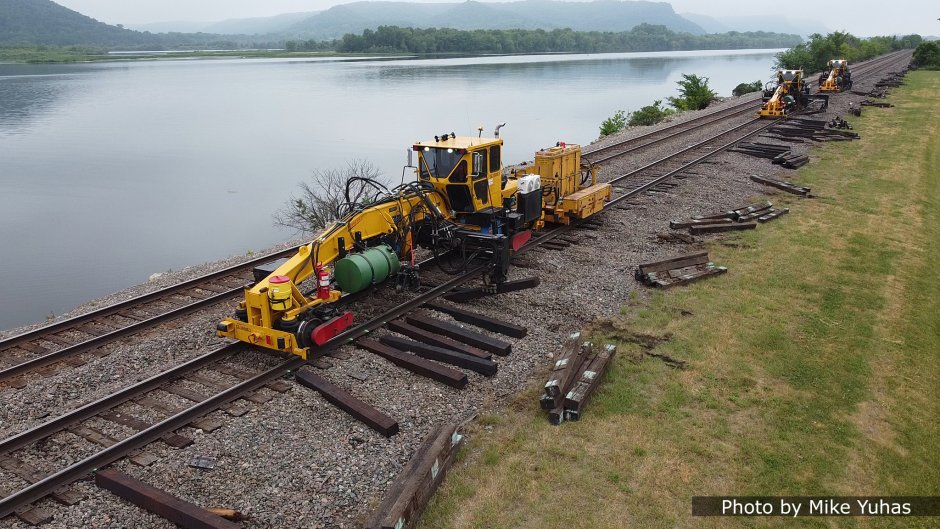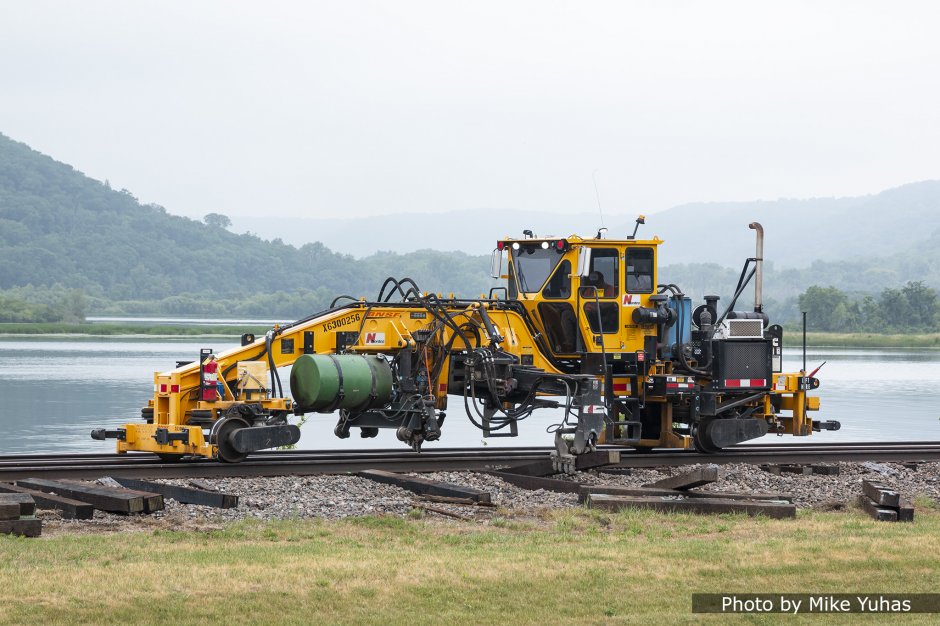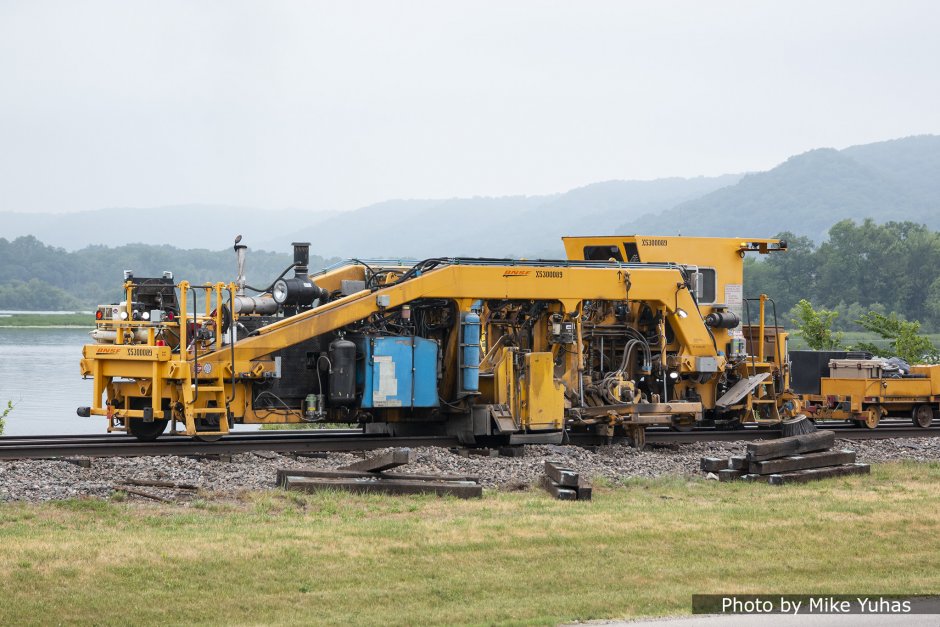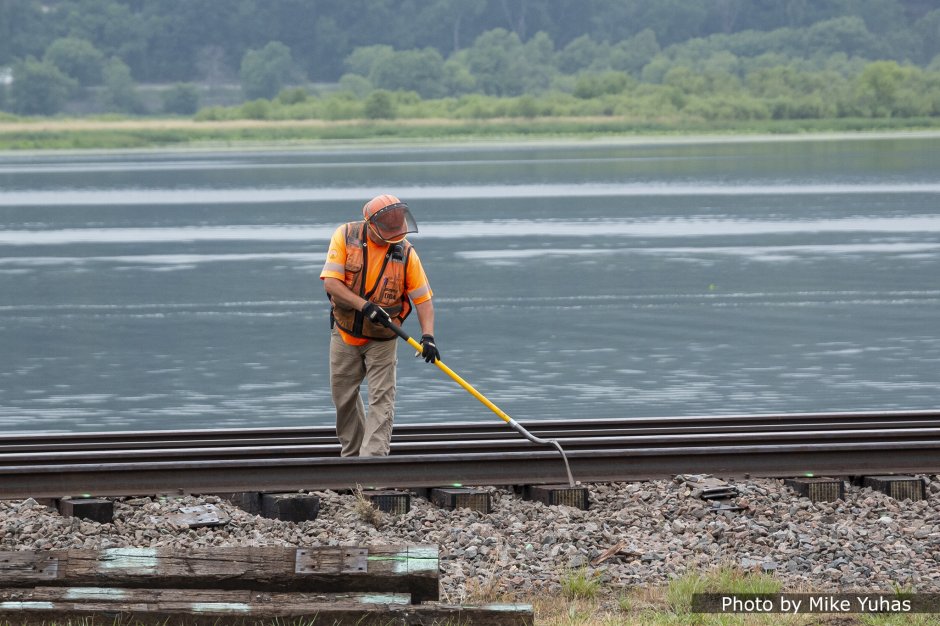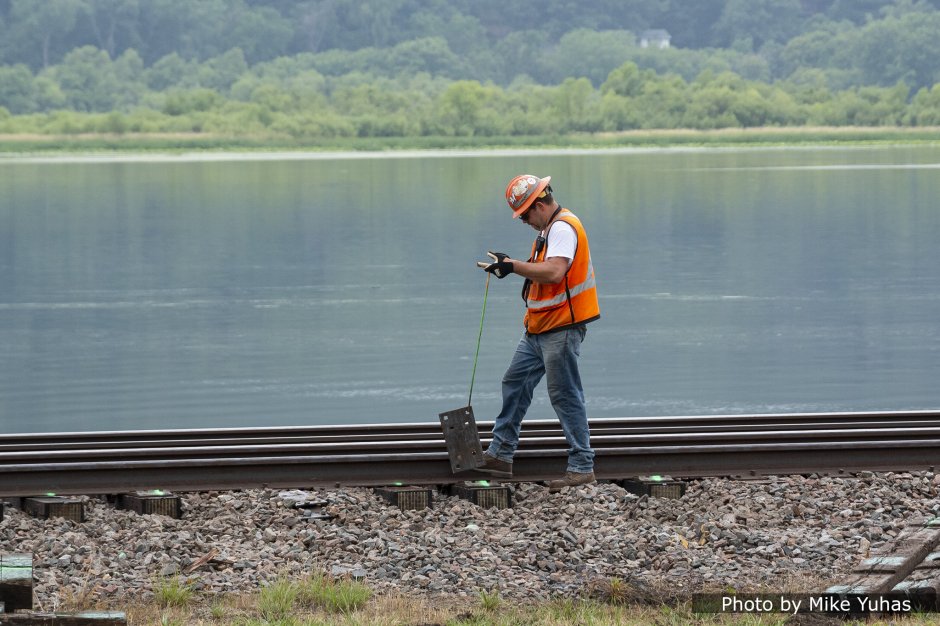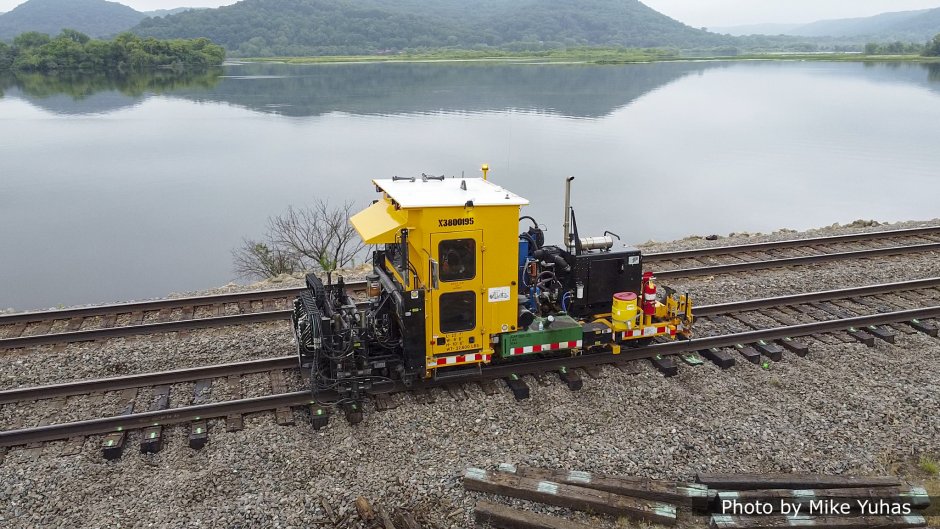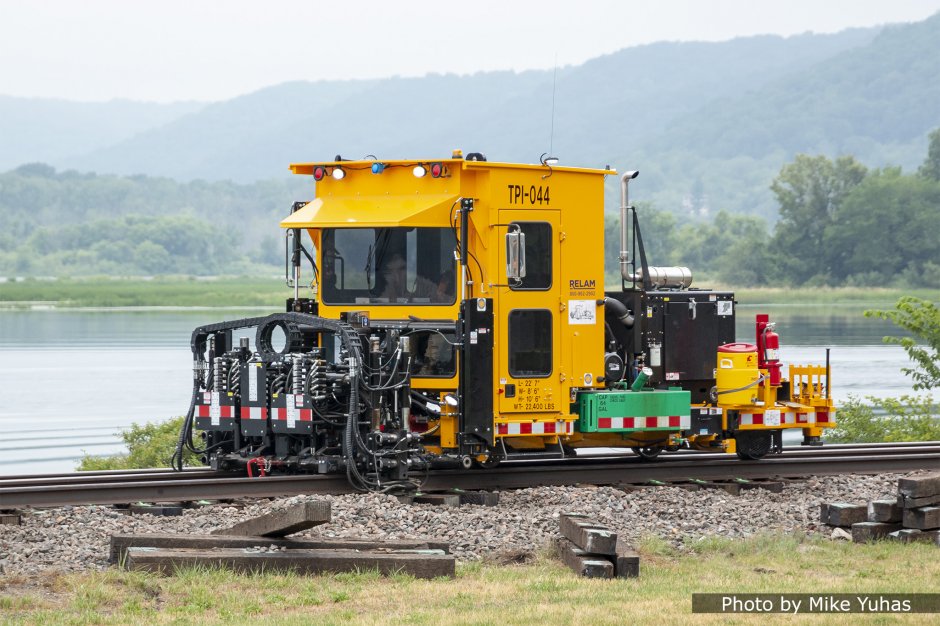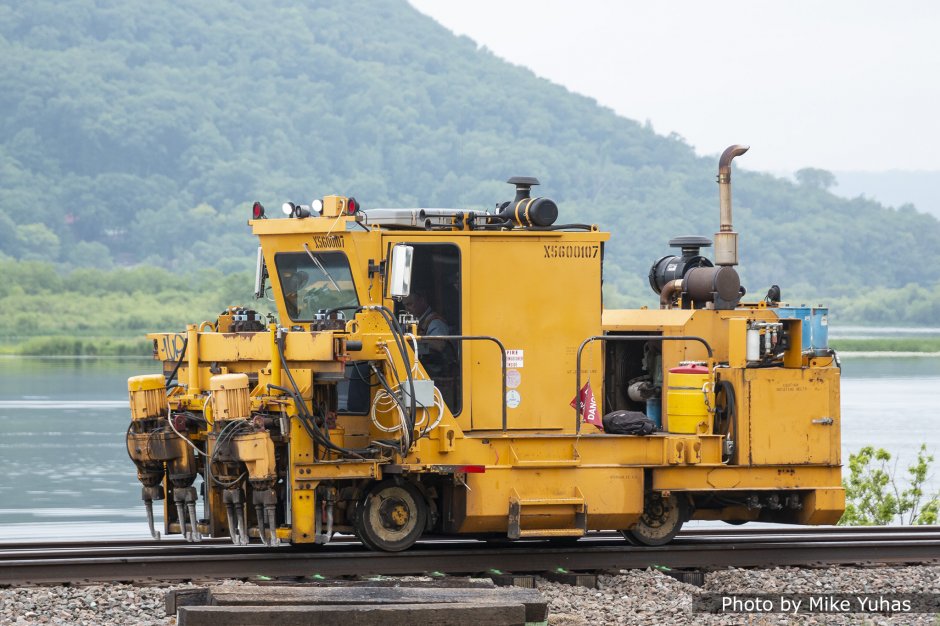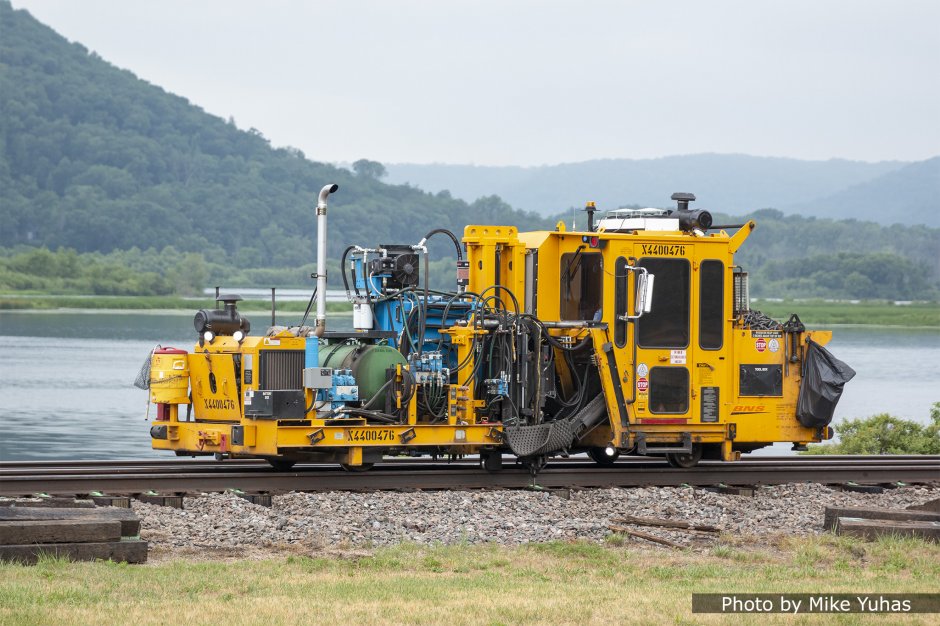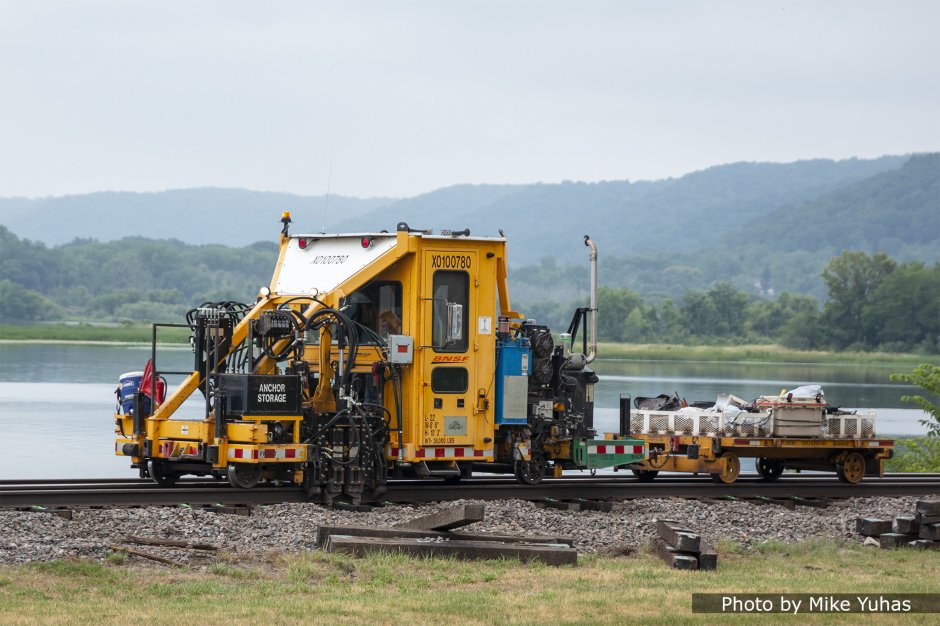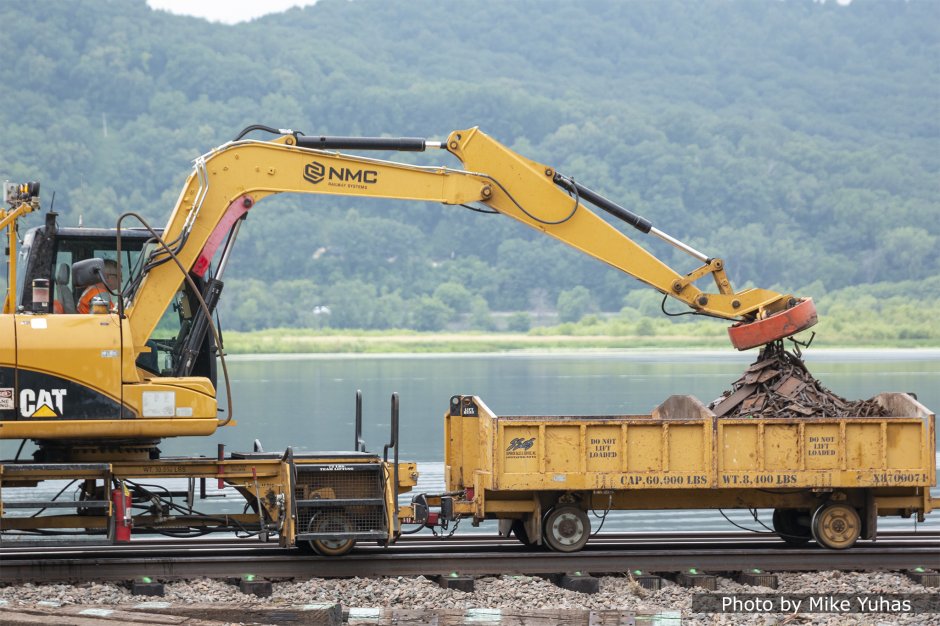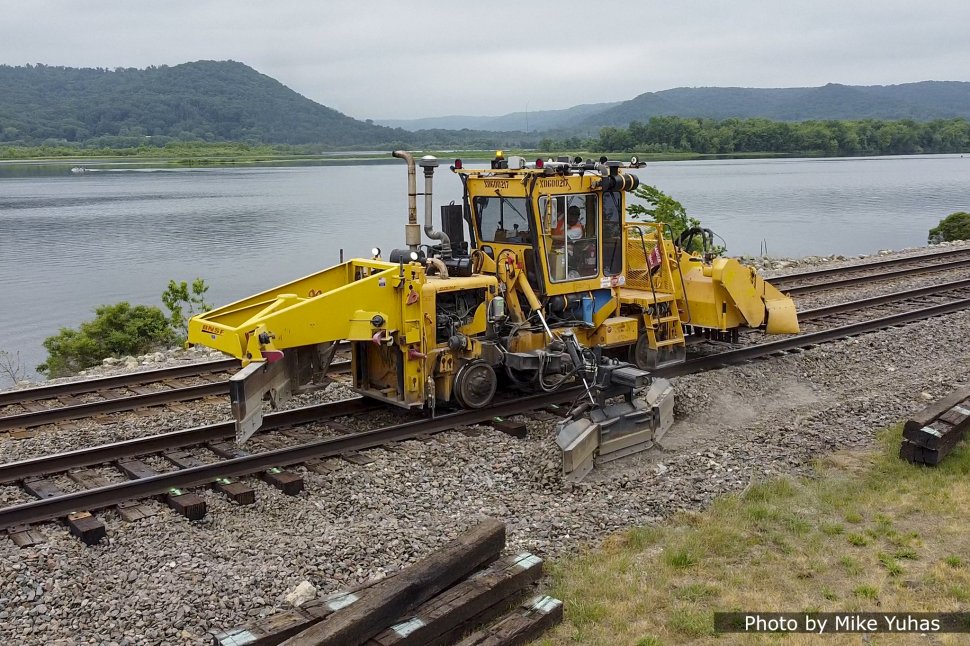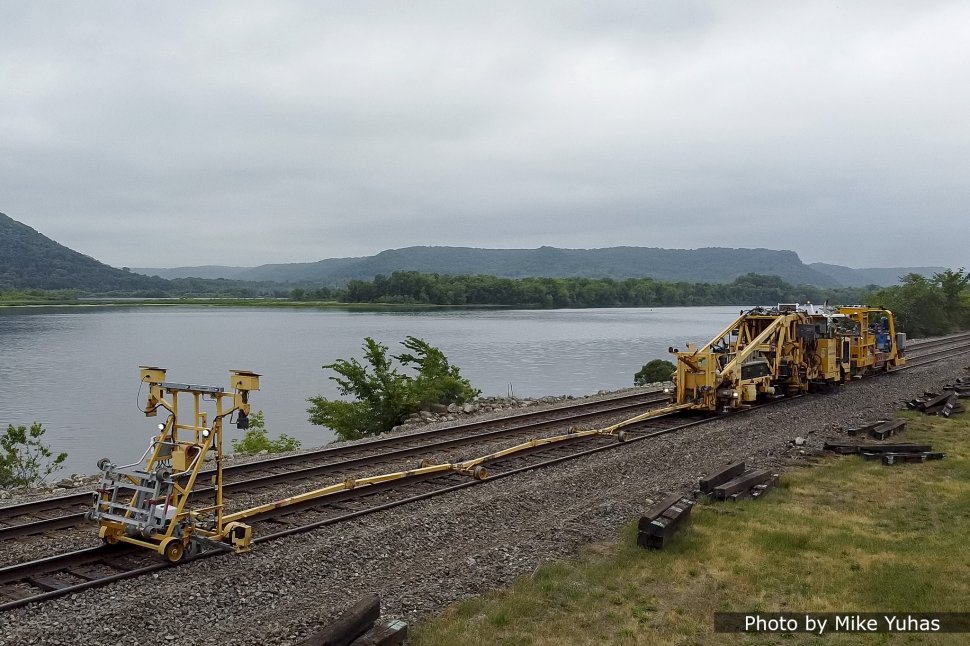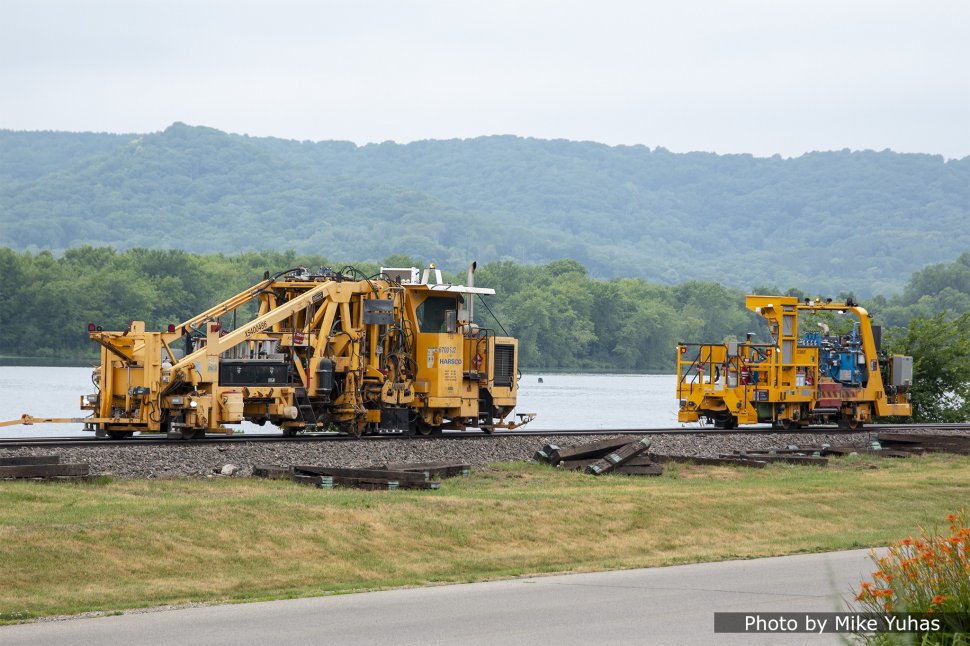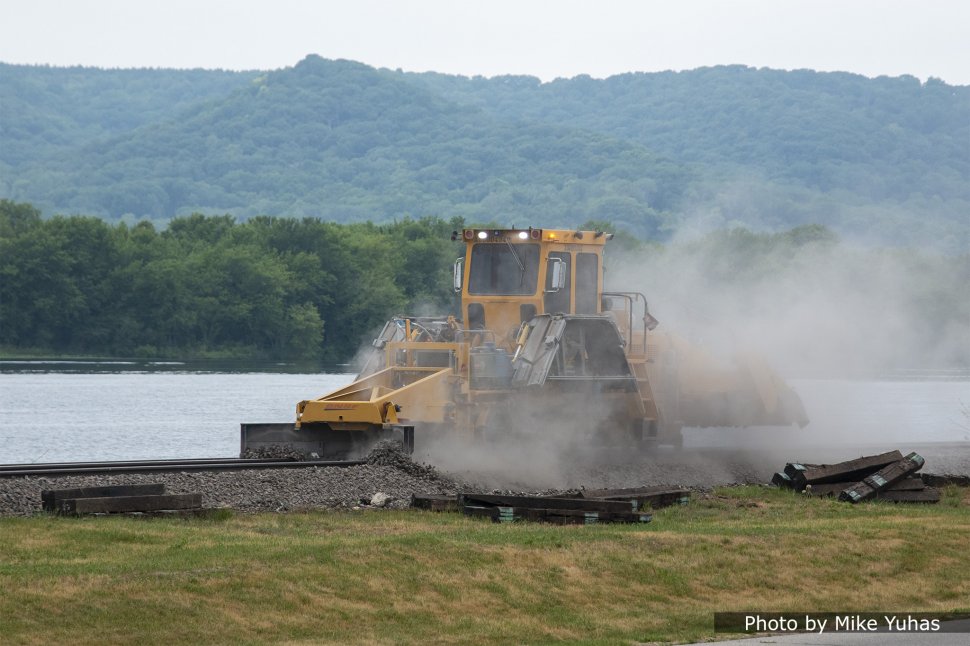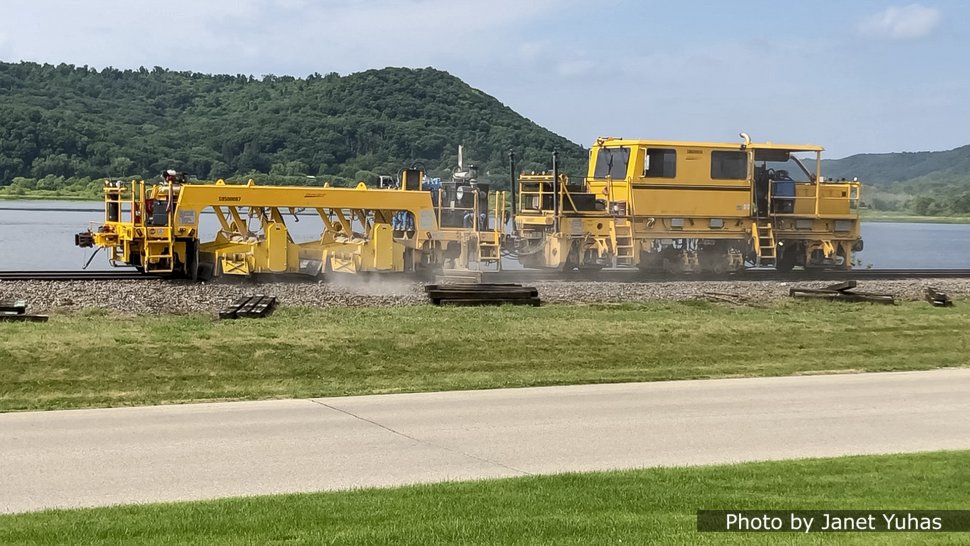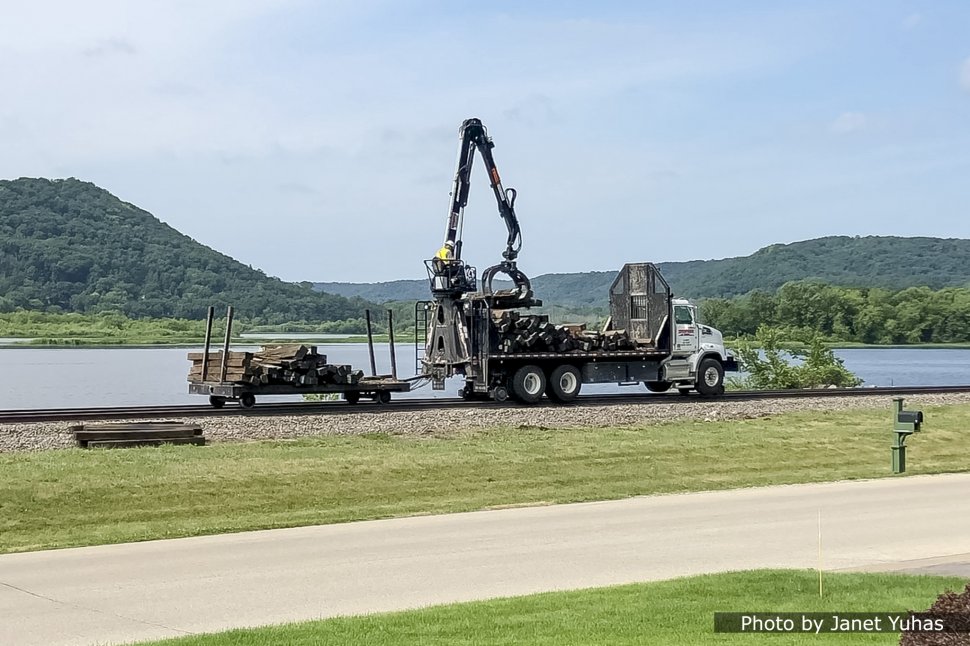Documenting a tie replacement project
by Mike Yuhas
This story originally appeared in the September 2021 edition of Sparks & Cinders. Photos may be embiggened simply by clicking on them.
It’s been said that the typical wooden crosstie used on a mainline railroad has a lifespan of about 10 years. Renewing them becomes a pretty large project when you stop to consider that a mile of track contains about 3,249 ties, based on a standard 19.5-inch spacing.
According to the Railway Tie Association, US railroads installed 16,145,483 ties in 2018.
This summer BNSF is spending over $25 million to maintain its mainline on the western edge of Wisconsin. According to BNSF, “most of this year's plan in the state will be dedicated to replacing and upgrading ballast and more than 70,000 ties.” This calls for a “tie gang made up of nearly 90 people… replacing ties on Main 2 from just north of Prairie du Chien to La Crosse and Main 1 from just south of Fountain City to La Crosse.”
Tie gangs are fascinating to watch in action. Michael McGinley, Senior Track Engineer with Advanced Rail Management, says “In our classes we called it an ‘upside down assembly line’ where the product stayed stationary while the ‘factory’ moved across it.”
From my porch along the BNSF St. Croix Subdivision in Trempealeau, I was fortunate to have a front-row view of the action as tie production gang TP04 worked its way eastward from Fountain City.
On June 2, 2021, the work train showed up with the tie distribution crew. That’s a fairly standard backhoe with tricked-out outriggers and a bracket on the front bucket to allow it to rest (and be moved upon) the top chords of the tie hoppers. The excavator is equipped with a grapple instead of the typical digging bucket.
The gang arrived at milepost 317.6 at 9:22 am on Friday, June 25. The first machines are spike pullers. This line of machines was moving from right to left. Piles of new ties are at foreground.
An anchor spreader slides anchors away from the ties marked for replacement. The anchors remain attached to the rail. This machine was built by Racine Railroad Products, of Mount Pleasant, Wisconsin. Racine has built anchor spreaders and adjusters since the 1970s. This is a model DASP - Dual Adjuster Spreader with Plate - the latest iteration of this machine, which allows the anchors to be spread with the tie and tie plate still in place (earlier versions required the tie to be removed first).
The first tie remover pulls the old ties partway out from beneath the rail. In this step, the rails are lifted so the tie (and tie plate) may be easily slid out. The bulging pile of ballast hints at the amount of force this machine exerts on the tie.
A couple workers equipped with long hooked rods manually remove the tie plates. These will be reused when the new ties are inserted.
The second tie remover pulls the old tie out completely. The empty space left by the tie is known as a crib. This equipment was manufactured by Nordco, of Oak Creek, Wisconsin.
A tie handling crane removes the old ties off the roadbed and stacks them into small piles for later pickup.
Another tie crane places new ties on the ballast shoulder adjacent to the empty crib. Note the ties piled up in front of the machine - they are pushed along the top of the rail to be used ahead. If there are more ties than cribs, the excess are placed on the trailer dragged behind the tie crane. Likewise, if an operator runs out of ties, a few can be taken from this reserve.
Nordco tie inserters (three of them) slide new ties into the empty cribs. For speed and efficiency, there are multiple machines of the same type handling each task: the first one moves far ahead and works a certain number of ties, the second works a like number, and the third handles the remaining ties. If a machine were to develop a problem, there are a couple others nearby so production can continue, albeit at a reduced rate.
This is a multi-purpose tie aligning machine. The first unit, near the center of the machine (obscured by shrouding), is a ballast broom. If any fine tuning of the tie placement is necessary, the second unit on this machine accomplishes that. Finally, a rotating broom brushes any ballast off the tie ends.
A worker manually removes any remaining ballast. This final cleaning step is important because the tie plate (next step) needs to rest on a clean tie surface.
Workers pick up the tie plates and manually place them on the tie ends.
The tie plate inserter raises the rails and slides the tie plates into position, and lowers the rails onto the tie plates. Racine Railroad Products developed its first tie plate inserters in the early 2000s; this, the Advanced Tie Plate Inserter (ATPI) was introduced in 2017.
This tamper squeezes ballast under the ties to provide s strong and stable foundation for the track structure. This machine did not appear to be working, at least not in front of our reviewing stand.
The spiker fastens the tie to the rail. Spike drivers are generally equipped with mechanical arms to shift the rail into proper gage and hold it when inserting the spikes.
The Racine DAA (Dual Anchor Adjuster) pushes the rail anchors tight up against the new ties. This machine rides on a chassis similar to the DASP seen earlier. The toolheads are oriented to squeeze the anchors, not spread them.
Used “OTM” (on track material) is picked up with an electromagnet and transported off the job site for recycling.
Now that the ties are secured to the rail by spikes and anchors, the remaining machines in the gang concentrate on track surfacing.
The ballast regulator seen in this photo pulls the ballast shoulder up in the area disturbed by the tie installation.
Self-raising and lining tamper. The main unit (first photo) lifts and lines track, clamping and tamping alternate ties. The drone unit (at right in the second photo) tamps the ties untamped by the main unit. The gear out in front of the tamper/surfacing machine (top photo) is the projection buggy and spacer carts. Beams of light are projected back to the tamper. There are shadowboards attached to the rail clamping/lifting unit within the tamper. As the tamper pulls the rails up, the shadowboard will cut off the light beam, the lifting will cease, and then the tamping tools compact the ballast exactly at the correct height. A shadowboard is seen in about the center of the machine in the lower photo.
Another ballast regulator plows shoulder ballast up and into the track gage to fill spots left empty by the tampers.
This step conclude the gang’s day, at 1:48 pm. All machines secured their tool heads and transited back to their temporary base near Fountain City.
After the weekend, work resumed on Monday morning, June 28 with another multi-function machine. The first unit, a double broom, sweeps ballast off the tops of the ties. The second unit is a track stabilizer. Following tamping work or ballast bed cleaning, not all ballast stones are lying in a consolidated and stable position. This machine applies a horizontal vibration, crosswise to the track. This is transmitted to the ballast bed achieving a rearrangement of the ballast stones to produce a denser structure. Without it most railroads are required to operate for several days at reduced speeds in order to "traffic tamp" the newly disturbed track. This is especially important when surfacing welded rail because the ability of the track structure to restrain the rail against thermal expansion is based on the interlocking of the ballast with the ties.
At 10:27 am., old ties are collected and removed from the job site for proper disposal.
The author wishes to thank Lydia Bjorge of BNSF; Brad Kerchof, formerly with Norfolk Southern; Michael McGinley, formerly of Southern Pacific; and Steve Birkholz, of Racine Railroad Products. Recommended reading: The Science of Broken Rails, by Mr. Kerchof, in the September 2021 issue of Trains magazine.
Copyright © 2021, Wisconsin Chapter, NRHS. Please consider joining the Wisconsin Chapter.

